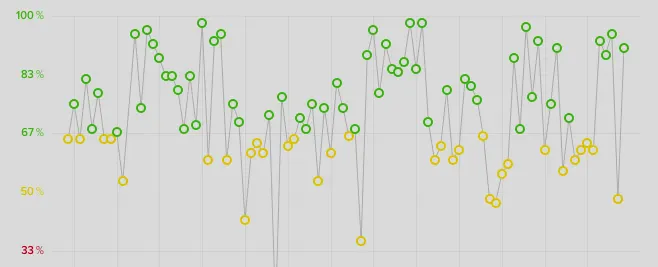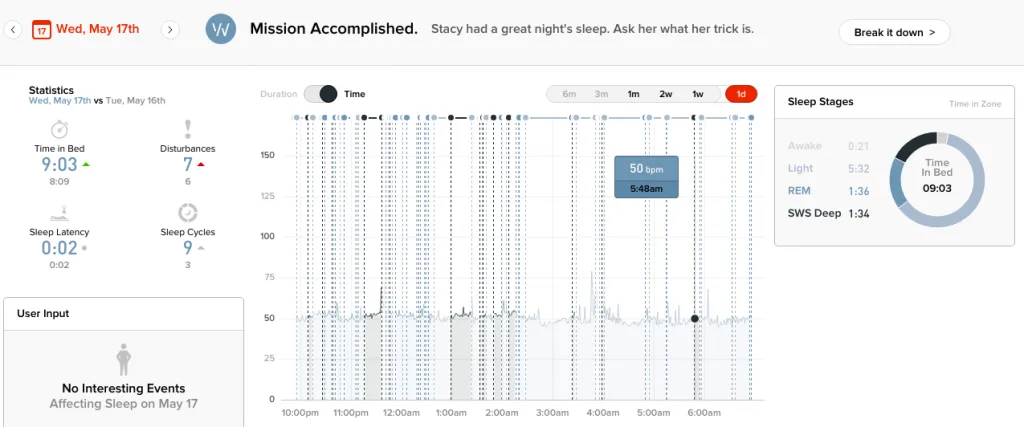Topics
- Article
How to Improve Recovery: Tips from Leading WHOOP Members

The WHOOP system is based on three founding pillars: Strain, Sleep and Recovery.
The crucial piece, and the key to peak performance in whatever you do, is being properly recovered. What do WHOOP members do to ensure they’re making the most of their recoveries? We identified some of our consistently best-recovered athletes and asked them to share their secrets. Here are highlights from what we learned, with recovery tips from each of them. Learn More: The Ultimate Guide to Heart Rate Variability
Best Recovery Tips
NICK PURDY
Age: 29
Sport: Distance Running
Nick is regularly one of our most-recovered endurance runners, with an average daily recovery of 68% over the last 6 months. “I bought the Strap to keep a better outlook on my body and training, to get actual data that I could use in real life. I think my above-average recovery has to do with how I deal with the stresses of life, I try not to let things get to me easily. Maybe it’s just how I’m wired, or it’s a necessity with the job of being a full-time fireman/EMT. Also, I have an amazing fiance who is there to listen to anything I want to talk about. I love my job and my coworkers, and I have a great support group of family and friends. I can’t ask for anything else to keep my stress levels low.” Recovery Tip: "I try to get naps in the 90-minute range if my schedule allows.”
STACY SHAW
Age: 51
Sport: Distance Running
Sleep is the No. 1 factor in recovery. For the past 6 months, Stacy has average an 88% sleep performance; for her that’s 7:24 per night. “When I overtrain I don’t sleep well and it becomes a vicious cycle. As an athlete, I’m driven and would work out every free moment if possible. WHOOP has become the voice of reason for me in my health and training. It’s also helped me stay on track with hydration and nutrition just because I am so much more in tune with my body.” Recovery Tip: “I would say sleep is key. I have really started to listen to the sleep planner on WHOOP. In particular, I check my deep sleep and REM sleep.”

COLBY CARTER
Age: 33
Sport: Cycling
Colby has averaged a 69% daily recovery over the last 3 months, ranking among the leaders of our engaged cyclists. “I’m very Type A (some say anal-retentive), I’m a big planner. This means I would stick to my plan for a workout routine more so than ‘listening to my body’ so I could get everything done I had scheduled for the week. I’m also a medical physician assistant, so the data and studies behind WHOOP attracted me to this fitness device. Now, if my recovery is less than desirable I am much more amenable to the idea of changing my plans and taking it easy so that the following day it’ll be more favorable for a better workout. WHOOP and the technology behind the app has changed my stubborn behavior.” Recovery Tip: “I stretch now before and after running and spinning, which I never did before the feedback from WHOOP. I also drink copious amounts of water before and during my workouts and make sure I replenish my body with nutrients.”
JEFF NORRIS
Age: 49
Sport: Distance Running
Jeff has maintained a 92% sleep performance in the last month, and recorded an average recovery of 69% in that time. “I really love to geek out on my data and I’m a personal trainer as a secondary business. I teach people how to get the most out of their bodies. Drinking water and a healthy diet are key. One thing I’ve found is that eating processed foods and carbs from sugar can lead to lower Recoveries. I also eat differently depending on my workouts, with more carbs on more strenuous days.” “In the past, I let 5 or 6 hours of sleep dictate my life. Recovery is now a big part of my day. If it’s low, I’ll adjust runs and rearrange my work schedule to accommodate sleep. Sometimes I reschedule appointments or shift my workouts to the evenings so that instead of getting up at 4 am I’ll get up at 6.”
“On the morning of May 28 (the lone red recovery pictured above), I was scheduled to do a long run. I’d been out the night before, didn’t eat well, and went to bed later than usual. I did an 8-mile run instead of 12 miles to help get my recovery back on track.” Recovery Tip: “On bad recovery days I’ll go back and evaluate my yesterday. What did I eat? Was there anything else unusual going on? Then I’ll make adjustments."
CHRIS MOOR
Age: 39
Sport: Cyclocross Racing
For the past 6 months, Chris has has an average daily recovery of 75%. He’s also never had a single red recovery in that time. “Being overtrained or under-recovered is one of the hardest things I have ever gone through. I went from training 12-15 hours per week to barely being able to do 6 hours some weeks. The WHOOP Strap has been a great tool for me to learn how to balance my fitness and recovery. Besides getting the sleep I need, I take a day off from working out when I drop into the yellow for more than one day. I take advantage of my green days by going for a longer or harder ride.”

“I really like seeing my strain from workouts, or sometimes more importantly from daily life. If I have a long day at work, my WHOOP knows it. I’ll either do a greatly reduced activity day, or take the day off from training completely. The biggest thing the Strap has taught me is to let go of my ego. This has been tough to learn, as is the case with many athletes, but knowing the WHOOP data has my back allows me to go easy or enjoy an off day. Recovery Tip: “I try to follow the 80/20 rule: Only 20% of my training per week is high heart rate, while the other 80% is spent in my endurance zone.” Learn More: A Simple Guide to Heart Rate Training
STEWART HAWKINS
Age: 30
Sport: Ironman Triathlon
Stewart makes recovery a big part of his training, with a 3-month average of 71%. “The pivotal action to my recovery is sticking to a routine. A routine allows my body to learn when to recover and when to perform, so I eat, workout, and sleep at generally the same time each day. I have noticed over the years that when I deviate a few hours from my schedule, my performance in workouts, as well as my overall health and sleep quality, degrades. I also tend to have more stress.”
“The two red days before May were the result of a brick workout (around 100 miles cycling followed immediately by 17-20 miles running), and then an Ironman I did on April 22. On March 15, I did my last long workout before my race. My low recovery the following day was as expected. I really pushed hard since it was the end of my training plan before I began to taper for the race. On April 23, the day after the Ironman, my recovery was 20%. But my body bounced back quickly, with an 86% recovery April 24–signs of a good and successful training plan.” “The first weekend in May, well, I went to the Kentucky Derby for a bachelor party. Obviously I wasn’t upholding my routine and I barely got any sleep. My recoveries were horrendous, but we had a blast.” Recovery Tip: “Find a routine that works within one’s daily life and responsibilities and stick to it!”
Jeff Mayer
Age: 47
Sport: Triathlon and Distance Running
Jeff also posts high recoveries as a triathlete, with a 69% recovery average over the last 3 months. He’s upped that to 74% in the past month, aided by the fact that he reduced his daily strain in preparation for a half marathon on June 3:
“I’ve loved WHOOP from a recovery standpoint and I’m very happy with its level of detail. It’s taken some of the anxiety away in preparing for triathlons. Now I know what level of training I need to get in. I’m also a sports supplements distributor and I consistently use two of them: A recovery shake a half hour after workouts, and a nighttime recovery pill.” Recovery Tip: "I don’t drink, and I use a chef company that prepares strictly healthy meals.”
Takeaways for WHOOP Users on Recovery Tips
- Try to develop consistent sleeping and eating habits. This may help avoid stress, and in turn improve recovery.
- Focus on hydrating (especially during and after workouts) and eating healthy foods.
- In order to meet your recommended sleep need, try napping or changing your schedule when necessary.
- Avoid overtraining by not going your hardest in every workout. Spend a good amount of time exercising well below your max heart rate.
- On poor recovery days, look back at anything out of the ordinary you did (or didn’t do) the day before. Adjust your workouts and take on less strain to get your recovery back on track.